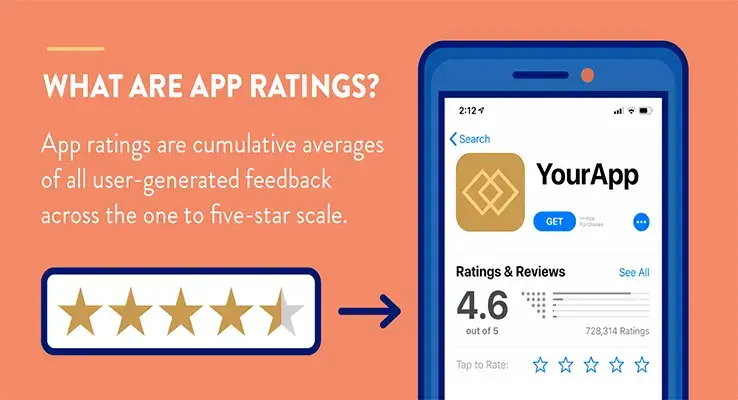A good rating is essential to your app’s success. And lots of users show interest in downloading a well-rated app. Therefore the user plays an essential component in the conversion rate.
Definition and Meaning of App Store:
An app store is the digital distribution platform for computer software, often from a mobile perspective. Apps offer a specific set of functions, which, by definition, do not include the running of the computer itself. These are designed to run on precise gadgets and are written for specific operating systems such as Android, Mac OS 10, iOS, Windows, etc. A complex software program designed to be used on a private computer, for example, may also have an associated layout to be used at the cell device. Such a cell app may also provide comparable if constrained capability as compared to the entire software program jogging at the computer.
Apps optimize the advent of show records thinking about the tool display screen length and backbone, offering continuity of capability over unique devices. Such an app may also be capable of a file synchronization between two different devices. App store usually organizes the apps they offer based on this deliberation. The primary function provided by the app compromises games, multimedia.
App store typically takes the form of an online store where users can browse through these different app categories and view each app, such as reviews or ratings, and acquire the app, including the app purchase if necessary. Many apps are offered at no cost. The selected app is provided as an automatic download, after which the app installs. Some app stores may also include a system to automatically remove an installed program from devices under certain conditions to protect the user against malicious software. In this post, we will be sharing some important proven and best tips to increase android play store app ratings.
Key Tips to Improve the App’s Rating:
1. Use the Android Creative Vision to Guide Your App Design:
First of all, you need to read and understand android’s creative vision on the Android Developer’s website. By embodying the principles in your app, you will enchant the user, simplify their life, and make them amazing. Make your design. Great design comes from understanding your users but still pushing the boundaries.
2. Bring Your Apps to Life with Material Design:
Material design is a design ethos from a multi-screen world. It provides a comprehensive visual, motion, and interaction design guide across all form factors and devices. Get started at Google.com/design.
3. Adapt to Different Form Factors:
A great Smartphone app doesn’t necessarily equal a great tablet or Wear or a TV app. You should not copy your app to other form factors. It would help if you adapted it to each use case. A tablet user will immerse them in your app. Therefore you need to make use of that extra screen space. Your wear user will want timely information. It would help if you also spotlighted a specific action that would be helpful there.
4. Focus on Simplicity:
Elegant, usable, high rated apps are most often simple too. Look critically at your menus and action bottoms and focus on what your user will want and need to do.
5. Make Sure Your App Work Flawlessly:
The quality guidelines will provide you with a minimum starting point from your app testing. By exercising these tests for each form-factor your app supports, you can ensure your app hits the essential requirements every tremendous Android app is built on.
6. Test Your App on Popular Devices:
You should test your app on as many real devices as possible. The Google Cloud Test Lab can help with the devices you can’t get your hand on. You need to sign up in the Developer Console to receive test reports for your alpha and beta apps. With the help of these reports, you understand the result of loading and interacting with your app on popular physical devices from different geographies.
7. Conduct Beta Tests with Trusted Users:
It would help if you sourced your testers, key members of your user community, and those keen on feedback. Then use the beta testing feature of your Developer Console to distribute your test app so that you can start gathering their feedback.
8. Let Users Use Your App Before Signing in:
If you ask users to sign in very quickly, then it can be an off-ramp. So it would help if you let them appreciate what your app has to offer initially. Have them sign in when making sense, such as for saving content, personalization, cross-device functionality, and more.
9. Interact with Your Users:
The Developer Console lets you read users’ reviews and reply to them too. The reviews can help you understand the top problems that users have with your app. Then, you need to respond, acknowledge, and fix the user’s problem. Let them know if the fix won’t be an instant update. You need to earn a following. Your app rating will reflect this mutual respect.
10. Monitor and Fix Crashes:
You need to keep an eye on reasons for crashes or freezes with the Developer Console information. You need to monitor this information carefully and fix any issues as quickly as possible. A high app rating and great reviews will pay dividends, encouraging others to download and engage with your app.
Take Away:
To make a successful plan, user feedback is very important. It has a direct impact on ASO. Additionally, reviews and ratings have a direct impact on the product page. Therefore it is crucial to take care of ratings and reviews. So to improve app rating, you need to build a great product. You need to improve it regularly and encourage users to leave feedback.
